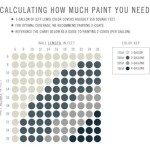Lighting plays an integral role in interior design and can be used to create a range of different atmospheres and moods in a space. There are a variety of different types of lighting available, and understanding the different types of lighting in interior design can help you to create the perfect ambience in your home or office. In this article, we will explore the different types of lighting in interior design and how they can be used to create the desired atmosphere.
Ambient Lighting
Ambient lighting is the general lighting of a room and is usually provided by overhead fixtures such as chandeliers, recessed lighting, or pendant lights. The purpose of ambient lighting is to provide even illumination throughout the room. It should be bright enough to allow people to move around the room safely, but not so bright that it is uncomfortable.
Task Lighting
Task lighting is used to provide focused light on a specific area where tasks need to be completed. Common examples of task lighting include desk lamps, under-cabinet lighting, and reading lamps. Task lighting should be bright enough to provide adequate light for the task, but not so bright that it causes glare or discomfort. Task lighting can be used to create a functional workspace in a home office, or to provide additional light for reading or other activities.
Accent Lighting
Accent lighting is used to draw attention to particular features or objects in a room. It can be used to highlight artwork, architectural features, or to create a focal point in a room. Accent lighting is usually provided by wall sconces, track lighting, or recessed lighting. The light should be bright enough to draw attention to the feature, but not so bright that it becomes overpowering.
Decorative Lighting
Decorative lighting is used to create a certain atmosphere or mood in a room. It can be used to create a cozy and inviting atmosphere, or to add a touch of drama. Decorative lighting can include chandeliers, pendant lights, or wall sconces. The light should be bright enough to make a statement, but not so bright that it becomes overwhelming.
Conclusion
Lighting plays an important role in interior design, and understanding the different types of lighting available can help you to create the perfect atmosphere in your home or office. Ambient lighting provides general illumination, while task lighting provides focused light for tasks. Accent lighting draws attention to particular features or objects in a room, and decorative lighting creates a certain atmosphere or mood. With the right combination of lighting, you can create the perfect ambience in any space.















Related Posts








